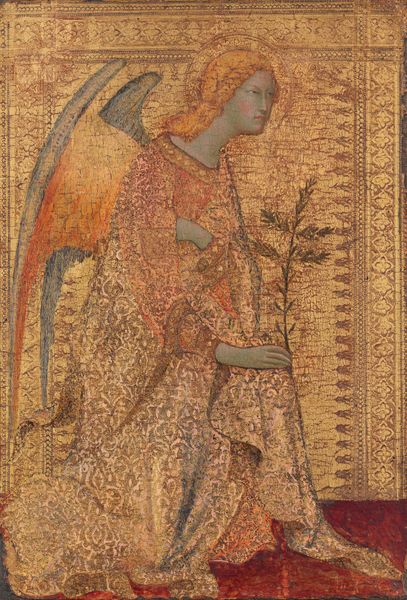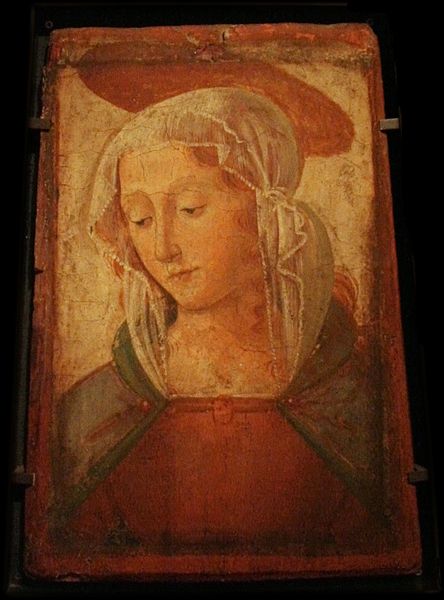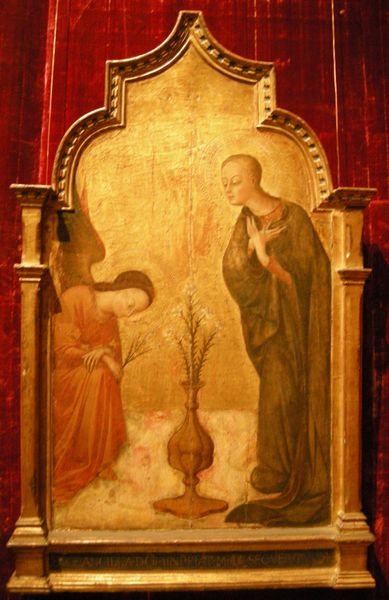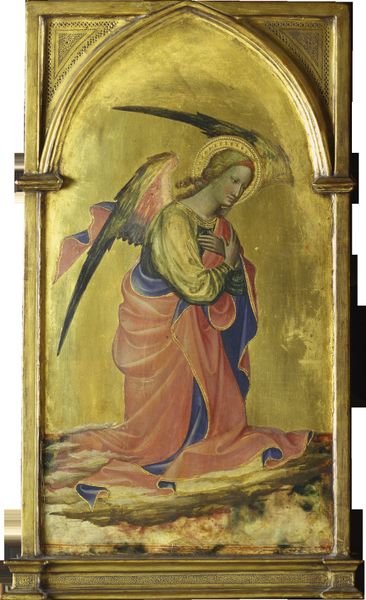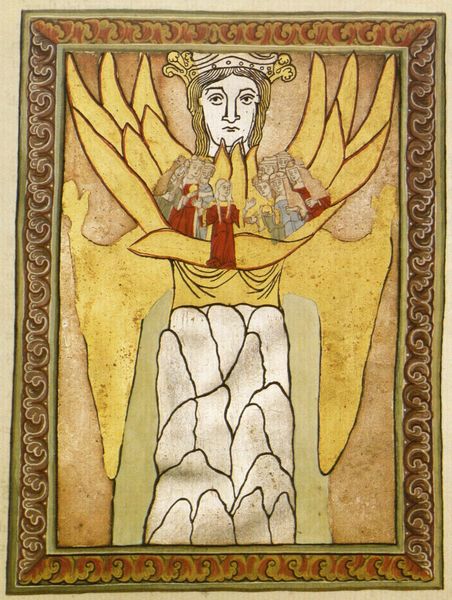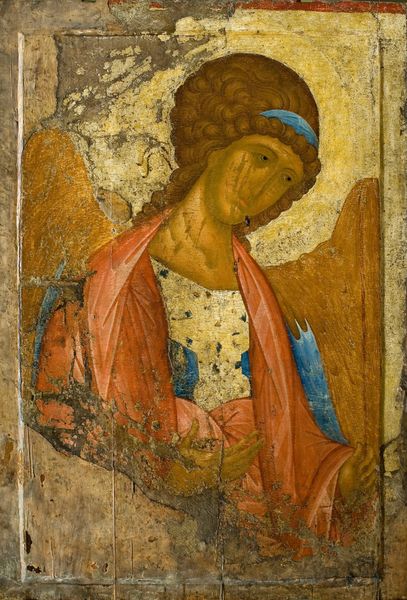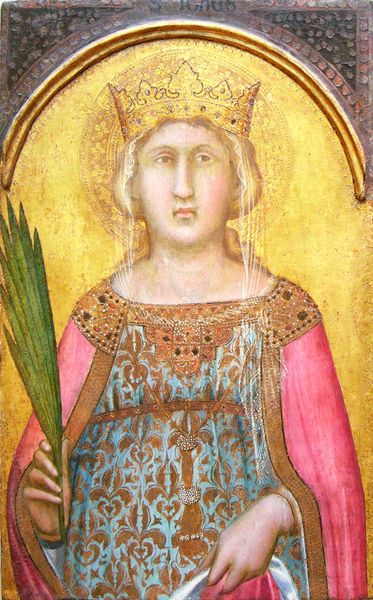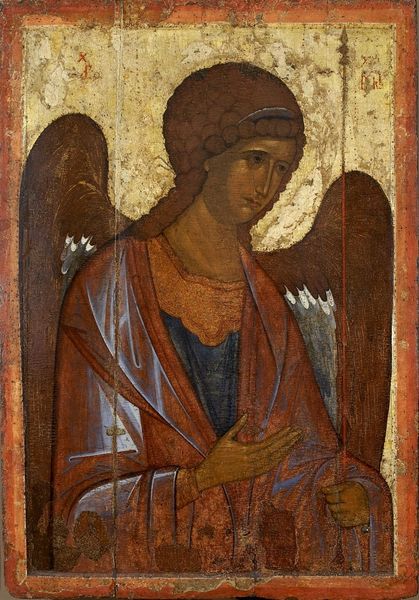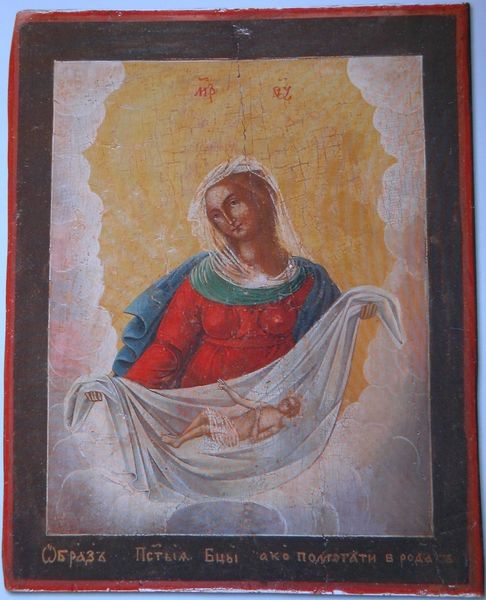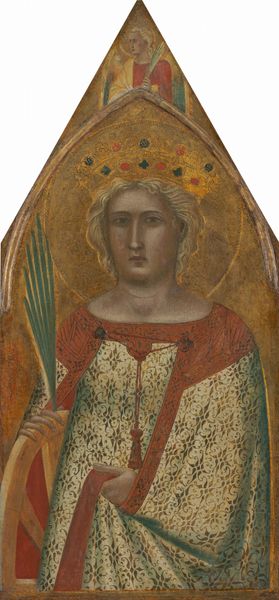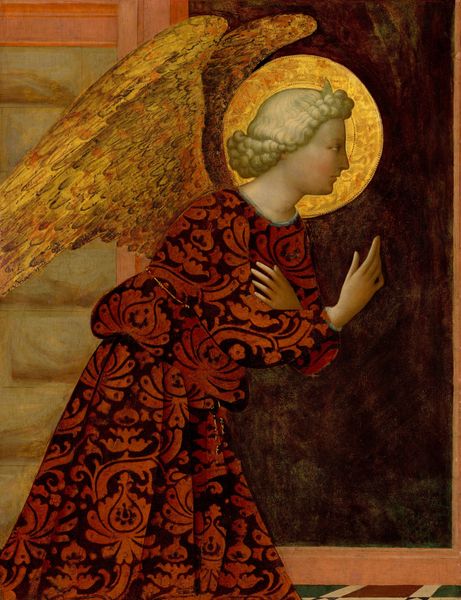
tempera, painting
#
portrait
#
narrative-art
#
tempera
#
painting
#
sienese-school
#
figuration
#
history-painting
#
italian-renaissance
Copyright: Public domain
Curator: This is Simone Martini's "The Angel of the Annunciation," created around 1333 using tempera on panel. What are your initial impressions? Editor: The shimmering gold background is quite striking, almost overwhelming the figure. The angel appears delicate, though—kneeling, and carrying what looks like an olive branch. Curator: Indeed. Martini was a pivotal figure in the Sienese school. This piece reflects the early Renaissance fascination with courtly elegance, as seen in the angel's ornate gown. The political implications here involve Florence’s influence on art patronage in that era. Editor: The garment’s intricate details suggest an intense focus on craftsmanship. Can we speak more on the actual construction of the piece? Tempera, as I understand it, would allow for precision… I am curious about how this particular panel and others were viewed amongst contemporary artisanal crafts. Curator: An interesting comparison. Italian city-states valued arts that expressed piety and stability, yes, but in different ways. Artists began signing works, demanding prestige that was never available before. The gilded ground makes it feel ethereal and quite removed from a craftsman’s labor, actually. Editor: I’d argue that the gold still indicates something of value—its worth reflects labor extracted somewhere. It would seem naive to ignore that context entirely when looking at sacred paintings. What effect did the influx of the valuable resource itself have on this era? Curator: Well, Sienese art, around this time, certainly began emphasizing wealth and taste as visual statements. And those gestures resonated powerfully through elite networks and ecclesiastical institutions. But remember that a scene like the Annunciation held religious importance and cultural significance; they reflected more than just artistic display. Editor: Right, of course, but the intersection is impossible to ignore. Ultimately, this work is impressive as much for its context as it is for Martini's brushwork. The way it sits, as part of something greater, becomes hard to ignore. Curator: For me, understanding how politics, patronage, and religious ideals all shape these pieces gives them an unparalleled depth. The history behind these gestures is far more significant, in terms of understanding legacy.
Comments
No comments
Be the first to comment and join the conversation on the ultimate creative platform.
